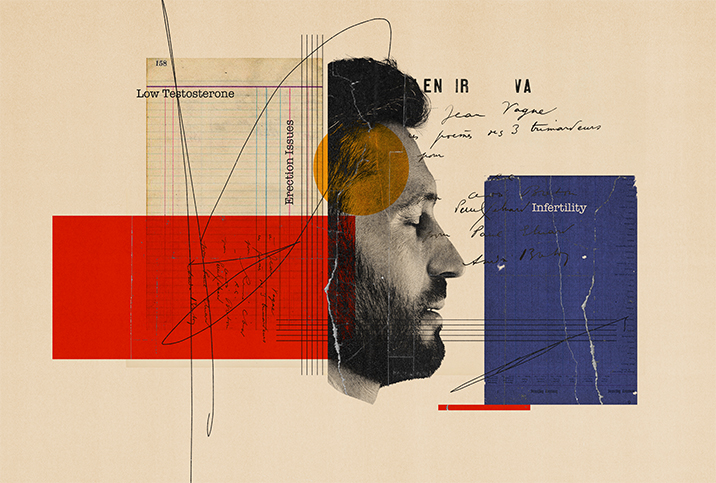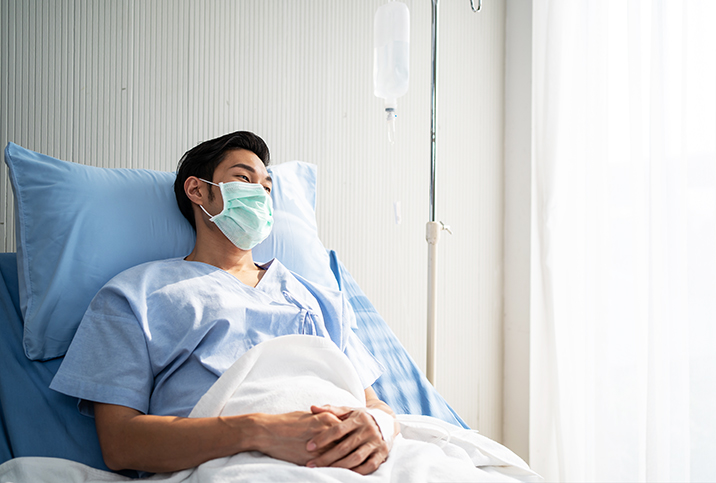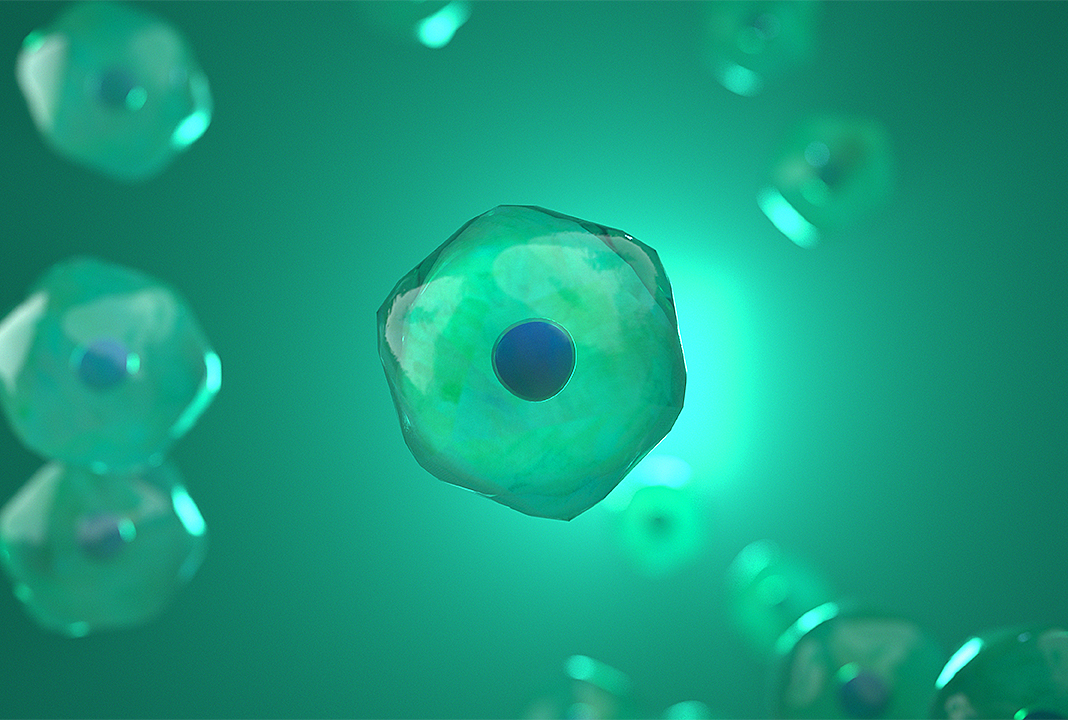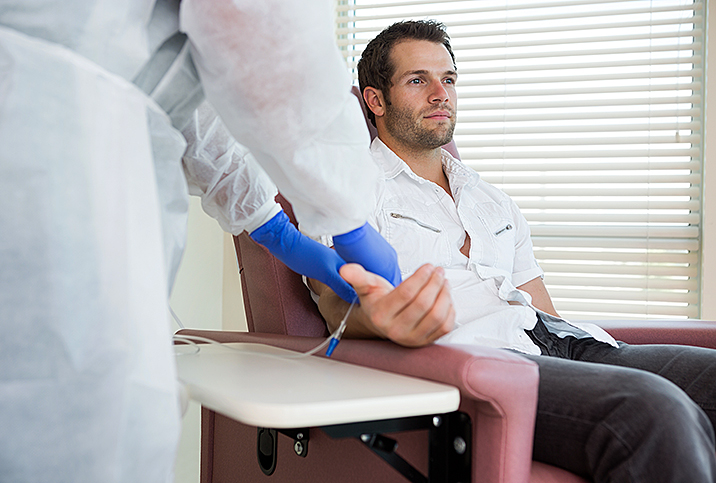You May Get Lucky, But Expect Testicular Cancer Treatment Side Effects

Mike Craycraft is a survivor. A testicular cancer survivor, to be specific.
Craycraft is a clinical pharmacist and the founder of the Testicular Cancer Society, a nonprofit charity that raises awareness and promotes testicular self-examination. He underwent an orchiectomy in 2006 to remove the affected testicle, and while his experience was typical, that doesn't mean everyone has an easy time with it.
"I had surgery on a Monday and I went to happy hour on Wednesday," Craycraft said. "I wasn't jogging to happy hour, but I was up and out of the house."
An orchiectomy, the removal of one or both testicles, is typically a 45-minute outpatient procedure and isn't incapacitating, according to Craycraft.
"Most men go home that day and recover quickly," he said.
In addition to surgery, the other treatments for testicular cancer include radiation therapy and chemotherapy. Unfortunately, all three options may carry side effects.
Orchiectomy
Treatment of testicular cancer typically begins with surgery to remove the affected testicle (rarely both). This procedure, known as a radical inguinal orchiectomy, removes the cancer while allowing the doctor to look at the tissue for diagnosis. The surgeon removes the testicle through an incision high up in the groin area.
An obvious cosmetic side effect of the orchiectomy is the absence of one testicle. A patient may choose to have a testicular prosthesis, a fluid-filled implant, placed at the time of surgery.
"You really can't dismiss the psychosocial aspects of the disease. There can be some anxiety and depression that can play a role in some of the situations," Craycraft said, pointing out that most guys fare well.
Craycraft said about 10 percent of men who have a testicle removed can develop hypogonadism, also known as low testosterone or low-T. If not identified and addressed, this condition can lead to sexual dysfunction.
During the orchiectomy, there is a slight risk of injuring the ilioinguinal nerve, which extends into the groin, according to Martin N. Kathrins, M.D., assistant professor of surgery at Harvard Medical School and a urologist at Brigham and Women's Hospital in Boston. An injury to this nerve can cause numbness or pain, but Kathrins emphasized that these cases are rare.
Chemo and radiation therapy
Side effects of chemotherapy, or the use of drugs to treat testicular cancer, may include nausea, vomiting, hair loss, chills, fever and immunosuppression, or a weakened immune system. In the long term, men who receive chemotherapy may be at a greater risk for developing other cancers or heart disease, according to Samuel Haywood, M.D., a urologic oncologist at the Cleveland Clinic.
Patients may experience long-term issues with lung function related to the drug bleomycin, a common component of a standard chemo regimen. Haywood cited the example of perhaps the most famous testicular cancer survivor, cyclist Lance Armstrong, who received a "nonstandard" chemo regimen because there was concern that bleomycin toxicity would have an impact on his ability to compete. This choice was made, in effect, to save his lungs, Haywood said.
The chemotherapy drug cisplatin may affect kidney function, the cardiovascular system and the blood vessels, according to Haywood.
"Those patients can have some numbness in their fingers from the small vessels, and they can also get the increased risk of heart disease," he said.
'I had surgery on a Monday and I went to happy hour on Wednesday. I wasn't jogging to happy hour, but I was up and out of the house.'
Patients may also experience Raynaud's phenomenon, which causes the fingers to turn white or pale then blue when they are exposed to cold or when the person feels stressed or upset.
Craycraft pointed out that if a man needs full-dose, cisplatin-based chemotherapy, the risk of hypogonadism increases to mid 30 percent.
Radiation therapy, which uses high-energy rays or particles to destroy cancer cells, can cause skin reactions, fatigue, loss of appetite and irritation of the intestines. Patients also have a long-term risk of heart disease and secondary cancers, such as colorectal or kidney cancer, which are not as curable as testicular cancer.
Impact on fertility
Kathrins usually tells his patients to avoid natural conception for at least a year after their last dose of chemotherapy or radiation therapy, because of the risk of birth defects for a newborn.
"The genetic material in the sperm can be affected," he said. "It can take at least 12 months, sometimes even longer, for the spermatogonium, the stem cells, to recover that genetic integrity and to limit the risk of birth defects."
Kathrins sometimes performs an onco-testicular sperm extraction (Onco-TESE), during which he obtains sperm from healthy tissue away from the tumor in the affected testicle.
"We can then preserve and use [the sperm] for assisted reproductive therapies in the future," he said.
Given that Onco-TESE's efficacy is still being studied, Kathrins also advises men to consider banking sperm before undergoing any of these cancer therapies due to their potential impact on fertility.
Retroperitoneal lymph node dissection
For advanced testicular cancer, there's a procedure known as retroperitoneal lymph node dissection (RPLND), in which the surgeon removes all of the lymph nodes in a particular area out of the back of the abdomen.
"That's where a lot of the nerves that control your ejaculation are," Haywood said. "Those patients are at risk for having anejaculation, where they may have intercourse and have orgasms but they don't ejaculate."
Difficulty with ejaculation after RPLND can obviously lead to issues with fertility. Haywood said it's important to have the surgery done at a high-volume center with doctors who have special training for this long procedure.
Some urologists have been trained to perform nerve-sparing procedures, in which they identify and save nerves during RPLND. With adequate nerve-sparing, the rates of preserved ejaculation in patients can be up to 90 percent or 95 percent, Haywood said.
Follow-up care
Testicular cancer follow-up care varies depending on the type and stage of the cancer, and the treatment involved. For example, Craycraft said if a man is being monitored in what's known as surveillance, he is likely going to be seen more frequently than if he had demonstrated a positive response to chemotherapy.
The most important detail for follow-up care is that patients remain consistent, Haywood said. Patients who are most likely to get testicular cancer are in their teens, 20s and 30s, and this group, unfortunately, does not tend to be very compliant with seeking healthcare.
"Even with the best treatment, patients can have the cancer come back, and that's one of those things that we want to know ahead of time and catch as soon as possible and help treat them then," Haywood said.
After treatment, it's critical to watch patients not only for a cancer recurrence but also for heart disease and other cancers that can develop over the long term, he said.
"The biggest key is talking to your doctor, figuring out what the schedule is and sticking to it, especially with early-stage disease," Craycraft said. "The biggest fear is if you decide not to be monitored appropriately and you relapse."


















